Spies Like Us: The Spooks of Georgetown
By • October 24, 2019 One Comment 12560

“The advantage of obtaining the earliest and best Intelligence of the designs of the Enemy … have induced me to entrust the management of this business to your care.” So wrote Gen. George Washington in 1777 from his headquarters in Morristown, New Jersey, to New York merchant Nathaniel Sackett.
Yes, the father of our country and namesake of our nation’s capital was also America’s original spymaster.
Tales of spies and espionage continue to intrigue the average citizen, perhaps more than ever. To be a spy is to inhabit “a wilderness of mirrors,” a phrase attributed to James Jesus Angleton, oracle of the Central Intelligence Agency. It is to blend in — not at all to be like a James Bond or a Mata Hari.
It is generally agreed that there are more spies in Washington, D.C., than in any other city in the world. The International Spy Museum, now located at L’Enfant Plaza, estimates there are 10,000 spies in D.C. — meaning not just official operators but their numerous associates and various contractors involved with a foreign power The museum’s collection is serious and extensive, but also gives a nod to popular culture; James Bond’s Aston Martin is near the entrance.
Two popular recent TV series, “Turn: Washington’s Spies,” about spy circles in Revolutionary-era Long Island, and “The Americans,” about a Russian spy team acting the part of an American couple during the Cold War, complete the picture.
Today, former spy Amaryllis Fox is on a book tour for her memoir “Life Undercover: Coming of Age in the CIA,” offering her up-to-date version of spycraft in the War on Terror. Fox went to graduate school at Georgetown University while learning CIA techniques in Virginia at the age of 21.
Spies have been around the District since its founding in 1790. Our assignment today — should you choose to accept it — is focused on the oldest D.C. neighborhood, Georgetown. Let’s name some names that walked along the sidewalks and drove down the streets. The list is likely incomplete (which we neither confirm nor deny).
GEORGETOWN’S SPOOKS — FROM THE CIVIL WAR TO THE CYBER AGE
During the Civil War, Georgetown was a hotbed of Southern sympathizers, notably businessman William Corcoran and Britannia Peter Kennon of Tudor Place. Some homes’ shutters were drawn so as not to view the U.S. flag.
Rose O’Neal Greenhow, who lived downtown, was the Confederates’ most famous spy in D.C., regularly under surveillance by Allan Pinkerton’s guards. She had some helpers, of course, including Betty Duvall, who rode through Georgetown to Chain Bridge and escaped to Fairfax, Virginia, as well as Ann Lillie Mackall, who transported some notes to the South. Duvall and Mackall are buried in Oak Hill Cemetery.
During World War II and the years just before, things heated up. A great guide to spies is the 2017 book “Spy Sites of Washington, DC” by Robert Wallace and H. Keith Melton, published by Georgetown University Press, a source for this article.
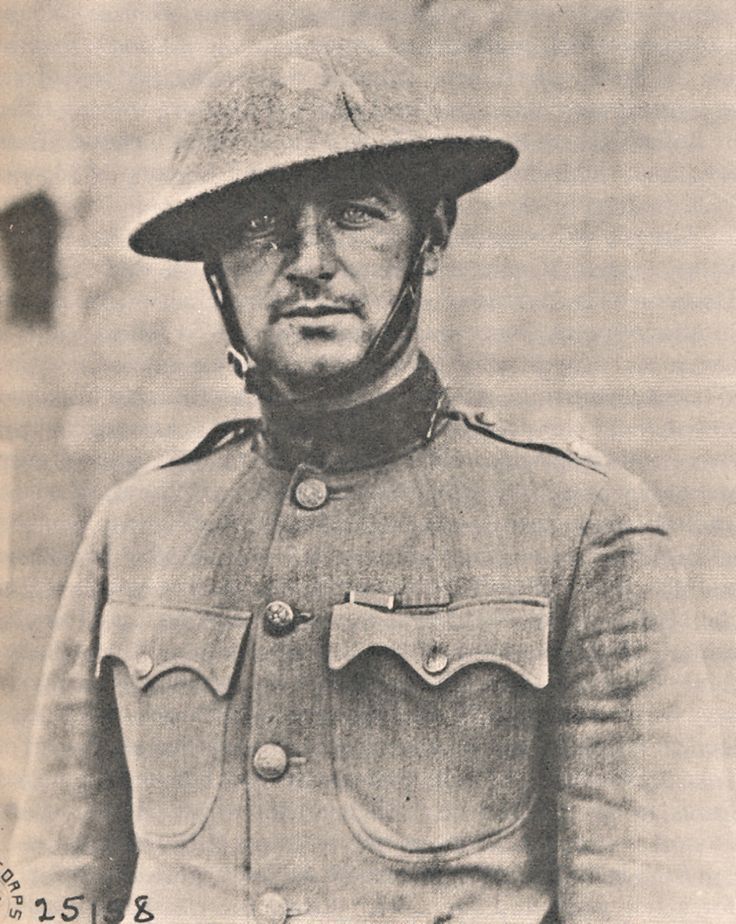
Lt. Col. William Donovan in France during World War I.

William “Wild Bill” Donovan as OSS Director during World War II.
One of the biggest names in espionage and counterintelligence was indeed a legend: “Wild Bill” Donovan, head of the Office of Strategic Services, who lived at 2920 R St. NW, later the home of Katharine Graham, publisher of the Washington Post.
“Georgetown was home to some of the most significant figures from OSS and the American intelligence community, most notably Gen. William Donovan, Ambassador David Bruce, William Colby, Desmond Fitzgerald, the Alsop brothers and Frank Wisner,” says Georgetowner Charles Pinck, head of the OSS Society, which preserves and promotes the legacy of the short-lived federal agency.
“OSS not only made a significant contribution to America’s victory in World War II, it was the predecessor to CIA, the U.S. Special Operations Command and the State Department’s Bureau of Intelligence and Research. Its greatest contribution to America was best expressed by Gen. Donovan in his 1945 farewell address, when he said that OSS ‘had shown the people of America that only by decisions of national policy based on accurate information do we have the chance of a peace that will endure.’
“This will be one of the most important themes of the National Museum of Intelligence and Special Operations that the OSS Society is building in Loudoun County,” Pinck added.
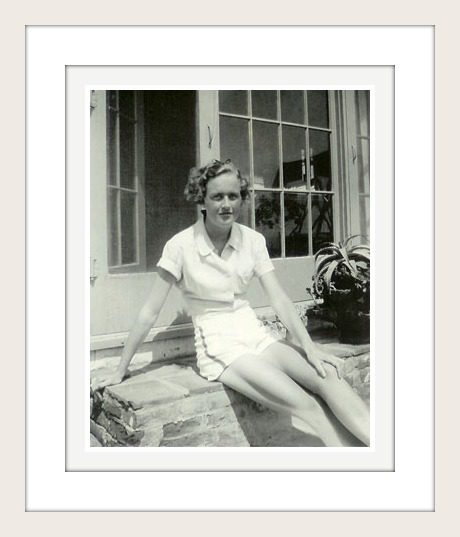
A young Julia Child.
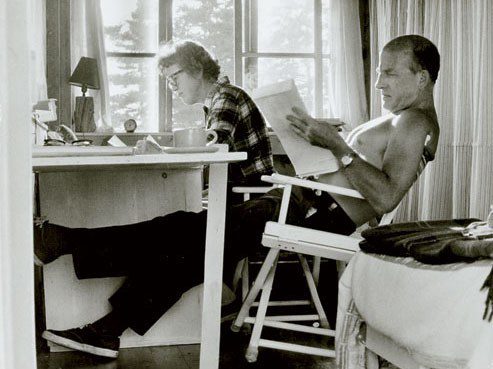
Julie Child and her husband Paul
Future chef Julia Child worked for the OSS and lived at 2706 Olive St. NW with her husband Paul after the war. The home is being extensively renovated.
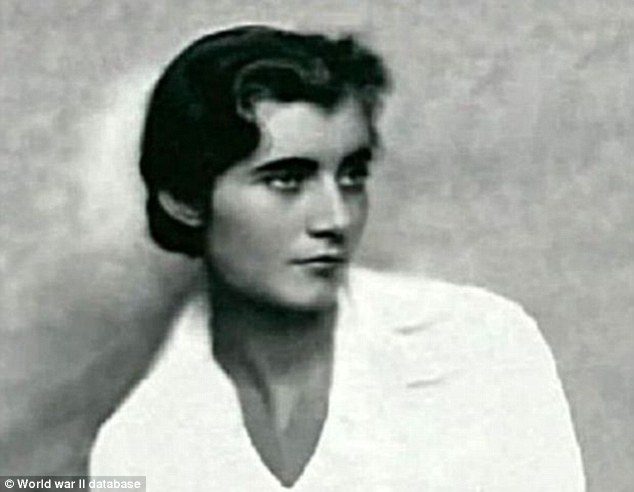
Amy Elizabeth Thorpe.
Smart, sexy Amy Elizabeth Thorpe, who lived at 3327 O St. NW, married a Brit and worked for British intelligence. One of her more audacious capers occurred on Wyoming Avenue at the Vichy France embassy. It involved her wearing only high heels and a necklace to bedazzle a guard, allowing a safecracker in to steal documents. She was having an affair with the ambassador at the time.
Vassar grad and “clever girl” Elizabeth Bentley met her Soviet contacts at the Georgetown Pharmacy (now a 7-Eleven) and Martin’s Tavern during the 1950s.
Lauchlin Currie, who lived at 3132 O St. NW, was an advisor to President Franklin Roosevelt. He spied for the Soviets, according to Bentley. He denied it but remained in Colombia for the rest of his life.
British spy and bon vivant Ivar Bryce lived on Volta Place and was a friend of Ian Fleming, author of the James Bond novels. A friend of Oatsie Charles, Fleming visited Georgetown often and was an adviser to the OSS. Through Charles, he met the Kennedys.
Another figure of note during World War II was Brit Roald Dahl, who lived at 1610 34th St. NW. As a spy and romancer, he reportedly bedded Clare Boothe Luce. He later wrote books, including “Charlie and the Chocolate Factory.”
Alger Hiss, Senate and later State Department employee, spied for the Soviet Union and once hid intel in a pumpkin. Among other places, he lived on the 3400 block of Volta Place NW, where Prescott Bush lived later on, and then Stuart and Sally Davidson of Clyde’s Restaurant fame. House hearings on Hiss brought a young California congressman, Richard Nixon, into the national spotlight.
The traitor Duncan Lee, a spy for the Soviets, lived at 1522 P St. NW. He began his service in the OSS as an aide to Donovan.
Attractive “good girl gone bad” Judith Coplon, who lived on Tunlaw Road, was arrested for espionage, prompting sensational press coverage of her trial in 1947.
Allen Dulles, the longest serving CIA director, lived at 2723 Q St. NW, next to Dumbarton House.
Frank Wisner, who lived at 3327 P St. NW, was originally with the OSS, then moved to the CIA. He upgraded the agency’s work within the popular media.
Philip Agee, who lived on Cherry Hill Lane for a time, stole secrets to pass on to the Cubans and actively worked to reveal names of CIA agents. He wrote a book about it during the 1970s.
CIA officer Eloise Page, nicknamed the “Iron Butterfly,” taught Sunday School at Christ Church. Accomplished in her work, she received recognition later in life.
Double agent Igor Orlov, who lived with his wife briefly at 3301 O St. NW, never told her of his other life. Later, he had an art gallery in Alexandria, Virginia.
The CIA’s Angleton liked to have lunch at Le Niçoise at 1721 Wisconsin Ave. NW. The French restaurant was famous for its roller-skating waiters in the evening.
Another charmer was Jennifer Miles, who lived at 2800 Wisconsin Ave. NW and spied for the Cubans. After her arrest in 1970, she was deported to South Africa.
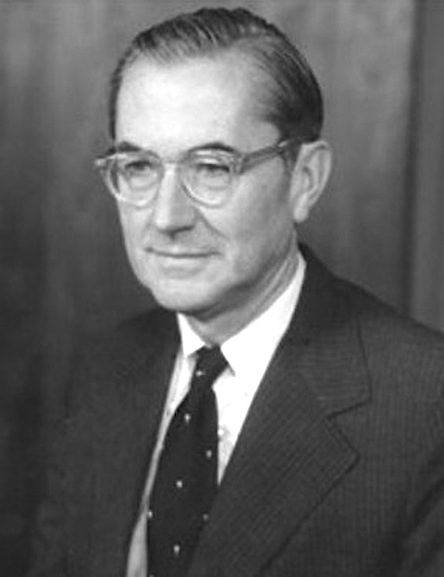
William Colby, Director of Central Intelligence, 1973-1976.
CIA Director William Colby, who reformed the agency after Watergate, lived at 3028 Dent Place NW for decades. He died mysteriously in 1996 while canoeing by himself on the Chesapeake Bay.
Aldrich Ames, whose wife worked at Germaine’s in Glover Park, met his Soviet contact in 1985 at Chadwicks at 3205 K St. NW (now Mr. Henry’s) with a shopping bag of classified documents weighing about seven pounds. One of Ames’s signal sites was a mailbox at 37th and R Streets NW; it has since been removed. He was arrested in 1994.
One of the best remembered Georgetown spy stories is that of supposed defector Vitaly Yurchenko, who simply walked out of Au Pied de Cochon (now &Pizza) in 1985, leaving his CIA handler at the table as he headed up the street to the Soviet Embassy at 2650 Wisconsin Ave. NW.
Traitor Jonathan Jay Pollard met with his Israeli contacts at the Dumbarton Oaks Museum at 32nd and R Streets NW in 1984.
More recently, al-Qaeda recruiter Anwar al-Awlaki, who posed as a moderate imam in Falls Church, Virginia, was known to the FBI for his sexual trysts in hotels, such as the Fairmont, the Melrose and Avenue Suites, two blocks from Georgetown. He left the U.S. in 2002 and was killed in 2011 during a U.S. missile strike in Yemen.
Kendall and Gwendolyn Myers lived at the Westchester and worked for the Cubans. Their M.O. was exchanging shopping carts at the Georgetown Safeway and the Glover Park Whole Foods. The couple was arrested in 2009; they were in their 70s.
Now you know how likely it is that a spy lives on your street (or perhaps just passed you riding an e-scooter). The mother of the Georgetowner publisher worked for the CIA as a teacher, so she said. This writer’s friend at the college newspaper at Georgetown University was flipped with his Soviet spy father by the FBI. With the truth revealed in 1980, he remains a friend.
Spies are all around — with the added intensity and immediacy of our digital world. A whole new realm of stealth is at work. Behold the hacking of the Democratic National Committee in 2016 and the election interference, which will be difficult to eliminate.
Indeed, write Wallace and Melton in “Spy Sites of Washington, DC”: “Washington would marvel at the satellites and sensors that spy from afar … marvel at the international cyber battlefield and the army of digital warriors with expertise and weapons that the nation requires for its security.”
And the New York merchant’s budget for spying in 1777? Fifty dollars per month from public funds.


Fascinating article!!! So many spies, and yet there are probably more. Robert Hanson was a spy in Northern Va.
Thanks for sharing all the great information in this well researched article.